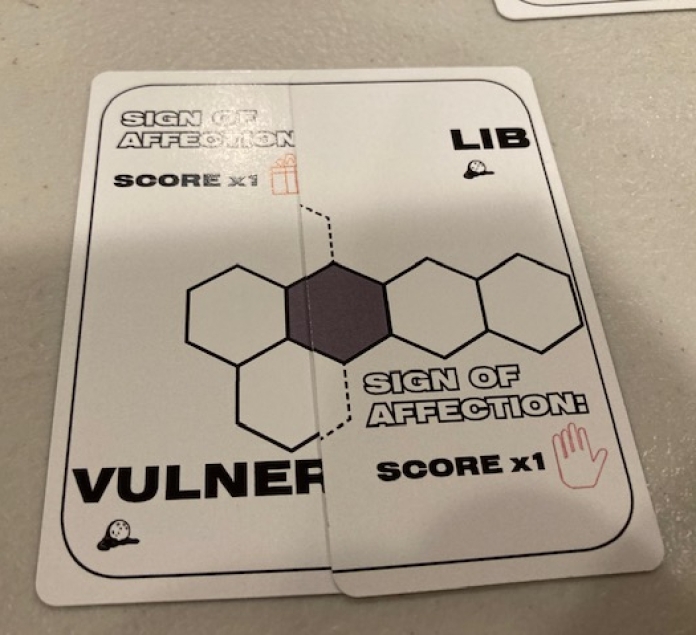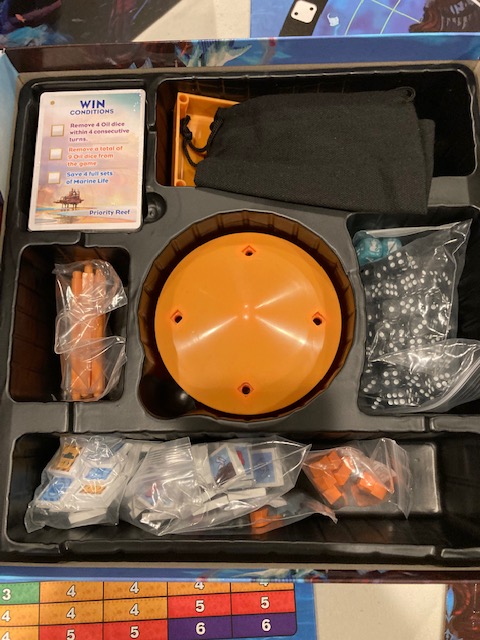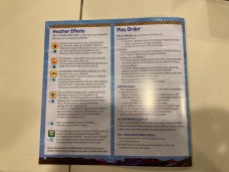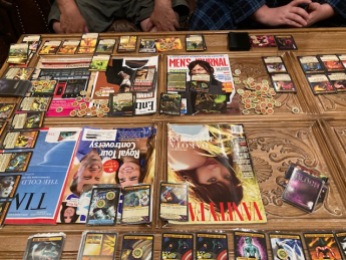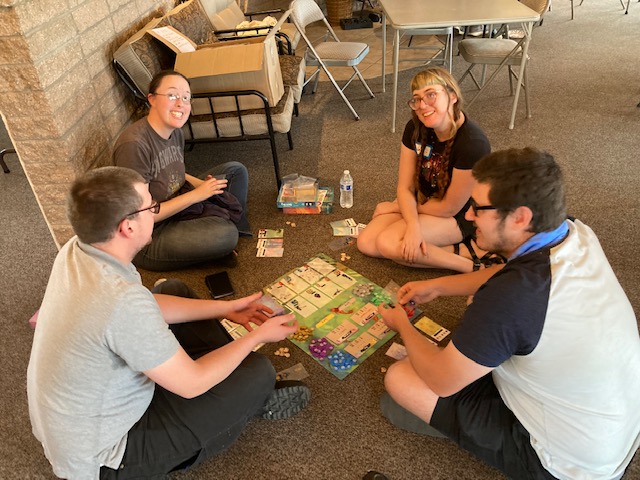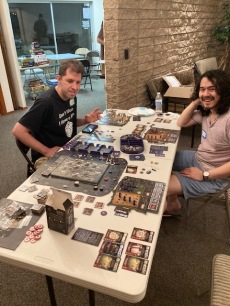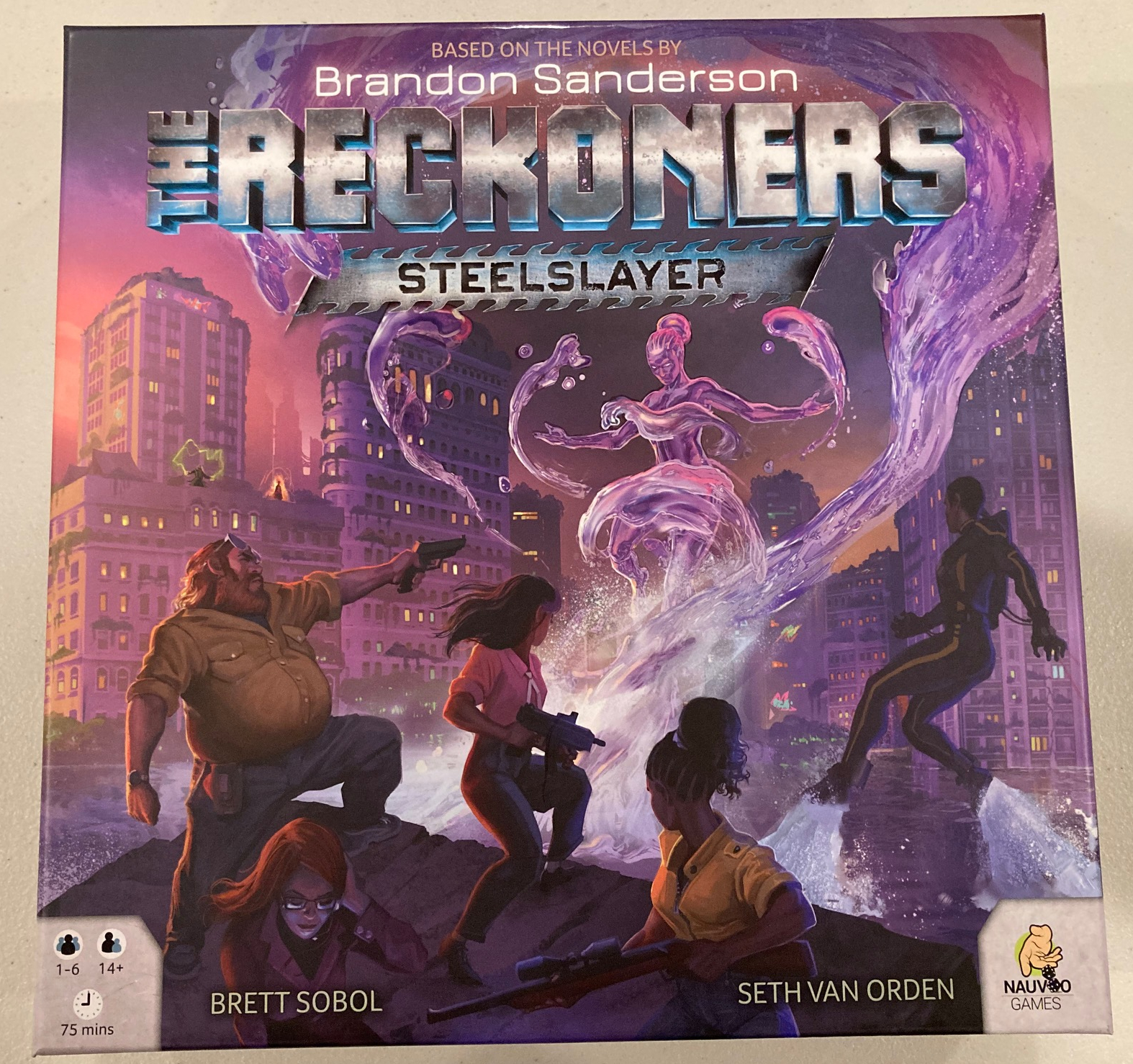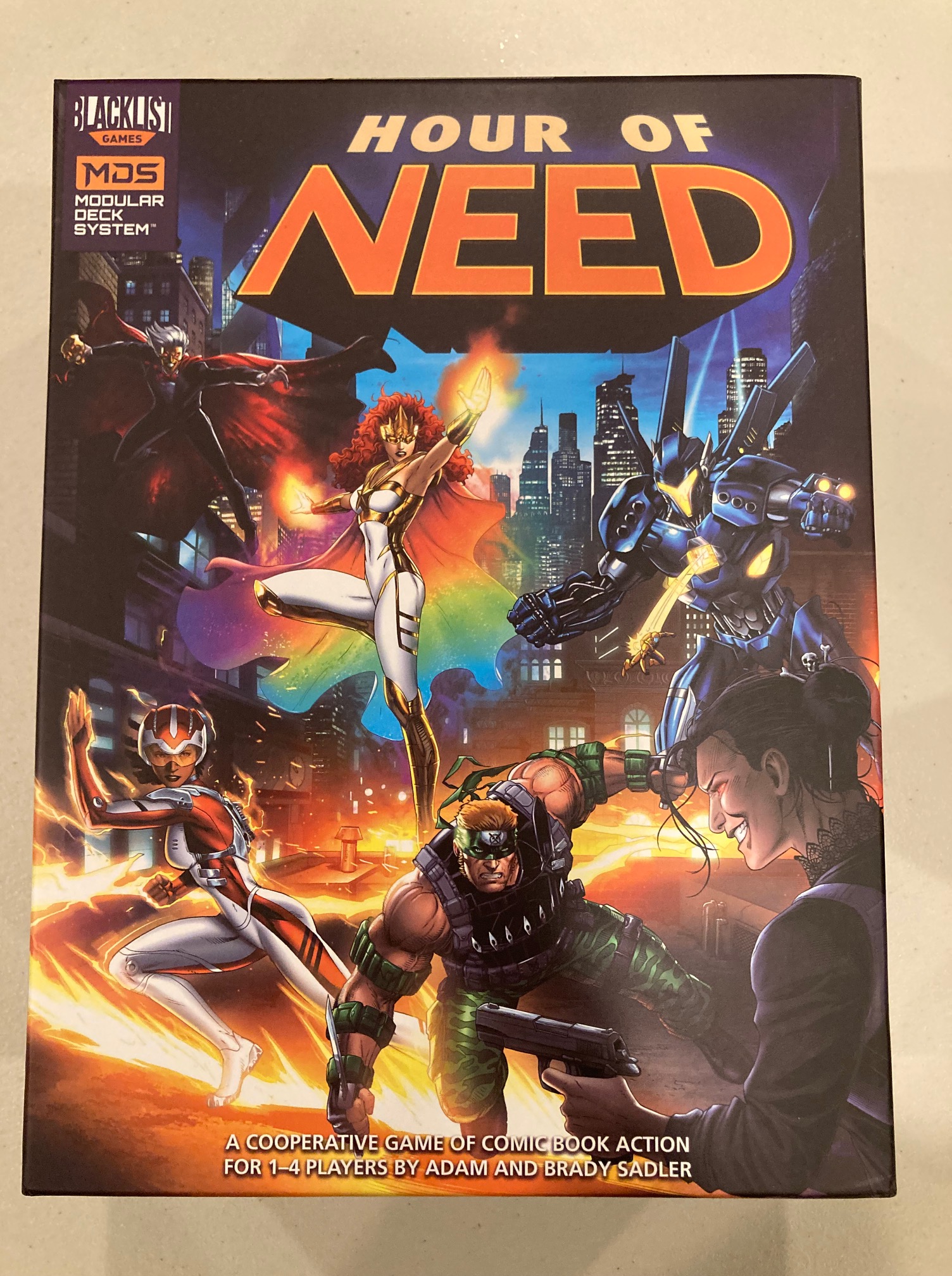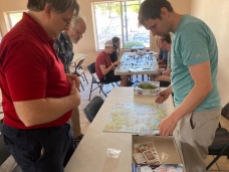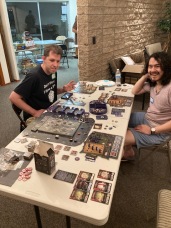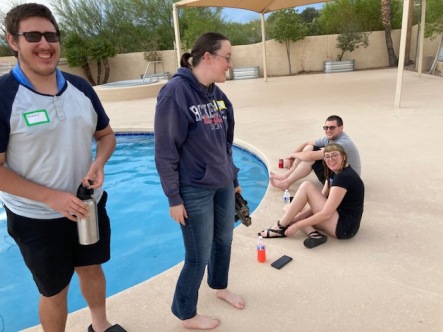KÖ-OP is a cooperative card game for only two players. It was originally on Kickstarter back in December 2021. It promised delivery in September 2022 and it delivered to me just last week (August 15th, 2022 or so). You read that right: this Kickstarter actually delivered early to its backers! Kudos to the developers for this!
KÖ-OP is a 2-player only game: it’s the journey of cooperatively assembling furniture from “someplace like Ikea” (but legally distinct so they don’t get sued). The elevator pitch of this game is that it’s Hanabi meets Fog of Love: it’s got hidden information that needs to be communicated, but within the bounds of the relationship. Basically, players play two emotionally stunted people in a relationship who can barely communicate! And they need to try to build furniture at the same time they are trying to repair their relationship.

Let’s take a look.
Unböxing

This is a pretty small game game with some cards: you can see the scale of it (and its expansion: This Way Up) next to a Coke can above.

The game unfolds like a strange Ikea package with hex cards and little teeny cards. See above and below.

In case you are wondering what those little “bowling balsl” are on the inside packaging: those are Swedish meatballs. Oh yes, victory points in this game are meatballs: this is a very serious game.

There’s not much to this. It’s a small game in a small box with some hex cards and tiny cards.

Ruleböök

I struggled with this rulebook. It’s not bad, it just seems to skimp on examples and elaborations. And it’s missing a few rules. There were also some things I had questions about that weren’t addressed (see fixes section below). This needs a FAQ, and a discussion of a few more things (“What do the dotted lines mean on manual cards?” “When do I reuse cards from the discard?”, etc). I was able to learn the game from the rulebook, the font was decent and big enough to read, so I guess that’s a win. It was … okay.

Sense of Humör

I like that this game has a sense of humor: it makes fun of a lot of the Ikea stereotypes: weird tools and random bags of parts (see above), Swedish meatballs for victory points, and silly names of furniture like the Vulnerlib (see below). In fact, every piece of furniture has a fun name made by squishing two cards together.
This game does a really good job of embracing that sense of humor and the silly Ikea stereotypes (such as barren black/white design of most cards, the meatballs, the Ikea icons, etc).

Solo Play
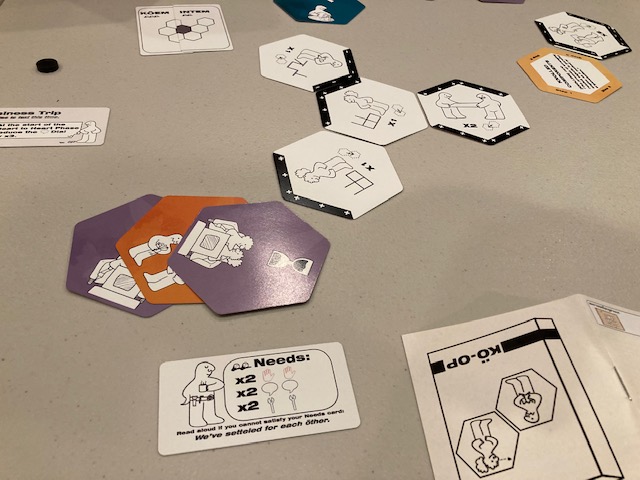
I tried a two-handed solo game to get a feel of the mechanics: it doesn’t really make sense to play this solo. (EDIT: or maybe it does make sense to play solo as a learning tool? Maybe this can be a tool for a person who has trouble with relationships: if the solo player plays both sides, maybe it can give the solo player perspective into why they have trouble with relationships! It can also give insight on why lack of communication sucks so much!)

I got kind of frustrated with the rulebook, but I was able to get through a round or two. The game didn’t really work that great: I was hopeful that a real 2-Player game would make this sing!
2-Player Game

I watched a 2-Player game and was the shepherd for the game. It think it was more fun to watch the game being played than actually play it!
It didn’t go over well. One quote was “The Swedish Meatballs were the only thing I liked.”
Discussiön

I think this game is too random. I had perfect information playing solo 2-handed, and I still couldn’t build some of the furniture because the cards were against me: there’s no way I couldn’t gotten anything built if that were a 2-Player with imperfect information. I got the wrong emotional cards, I got the wrong connectors, I got just everything wrong at the wrong time. There are some ways to fix that, but in general, it was just frustrating.
I felt like a lot of times I had choices, but not information to make a real good choice. Which needs card do I pick? Which furniture do I build? (EDIT: I guess you can see the top Communication card, so that gives you some information).

Mostly, the emotional needs never mattered as you built furniture: It seemed like the best way to score meatballs was to just build the furniture, and ignore the emotional needs. It was too hard to get the pieces you need with the right connections, so most of the time (all the time? I don’t think it mattered once) the limited communication trying to communicate needs never mattered.
Build the furniture: that’s all that mattered. And just hope you randomly get the furniture connections you need for the furniture you chose somewhat randomly.
“Oh, Not THAT Couple!!!”
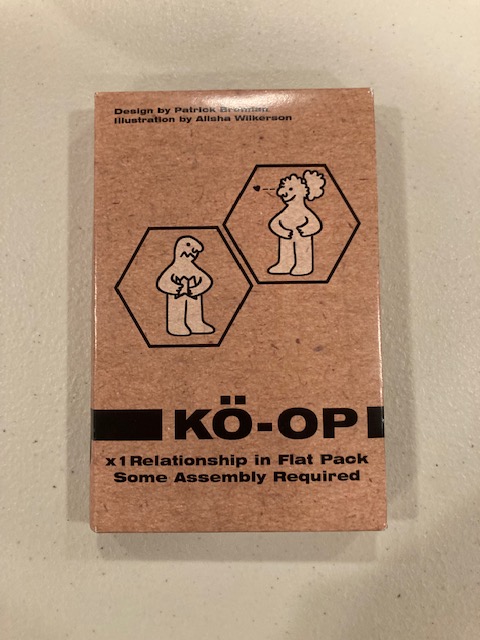
Have you ever been around that couple that can’t communicate and can’t work together? They yell at each other and don’t help each other because they don’t know how to communicate. I hate being around couples like that: it’s not fun, it’s uncomfortable, and I just want to leave. We’ve all been around couples like that. So, what does this game do? It puts you in the place of the couple!! Players play two emotionally student individuals who can barely communicate!! I can’t think of anything less fun than roleplaying a bickering couple. And that’s what this game is.

“But this game has a sense of humor! There are meatballs for victory points! Silly names for furniture!” And you are right: that helps alleviate a little of that tension. But once you realize that the game is too random, it sort of puts a dreary spin on the game: “Oh, we’re playing a doomed couple”. The couple might get lucky, they might not. More than likely, this couple’s relationship will probably not survive (even if their furniture does). It’s sort of depressing to think: “This couple will not survive even though they are trying to make it work: they won’t be able to fulfill each other’s needs because they are so emotionally stunted!”
There might be some ways to fix this.
Pössible Fixes
One problem with the game is that there are some edge conditions or natural questions that the rulebook doesn’t answer. Perhaps a slightly more comprehensive rulebook would help. Here’s some thoughts that came up:
- Can I move or take apart already built furniture? Thematically, it makes sense! If you’ve ever built furniture, you know you make mistakes and may have to redo something you’ve already done. It’s just part of life. There is NO DISCUSSION of this in the rulebook. This one rule might actually the savior of the game, because it can allow you to fix up some stuff after it’s been placed. The rules are completely silent on this, implying that once something is placed/built, it can’t be changed.
- Can I destroy 2 communication cards for one from some discard? Sometimes you don’t get the connections you need, but there might be some you need in the discard. It would be nice to have a mechanism where you could take two cards you have and trade them. It’s also thematic: how many times do you have random crap laying around when building: “Oh, that’s what that’s for!”
- Can I have a few more options of communication? Right now, you can only do one of three very limited things to communicate with your partner. It would be nice if there were more you could communicate:
I. “None of these Communication cards is in my love languages” would be nice: it happened to me many times. But I wasn’t allowed to communicate that.
II. “Our relationship is more important than this furniture: these are my needs!” Rather than build on your turn, just communicate your needs (or 2 of them or some subset of them) in place of building this turn. It’s thematic and represents more emotional depth, sacrificing the dumb furniture to learn about your partner.
iii. “I’m happy in this aspect, are you happy?” There is no overlap of symbols: if you both need (say) 2 “time” love language to be happy, you actually need 2+2=4 total to satisfy that! There’s no way to discover this until the end of the game. Again, it would be nice if this couple talked more. - Needs don’t seem to matter. It was clear that the most important part of the game was the building of furniture. It seems like there should have been some points scored if you built “parts” of furniture (points for working together) and got the love language points. There was no way to switch gears: “Lets work on our relationship more than the furniture”. Nope: this game was all about the building. Maybe the Needs cards should be worth more? The needs are ONLY worth two meatballs!! Should they be 5 meatballs? 10? “I mean, aren’t my needs worth anything?”
Don’t argue “Well, Hanabi only has minimal communication and it works!” with me: Hanabi is maximally streamlined and there’s only one source of randomness in the game, so they can get away with very minimal communication. The KO-OP game has multiple sources of randomness (connectors, love languages, choice of furniture without any information), and there’s just too much randomness to overcome with such minimal communication.
CÖnclusiön
I really don’t want to play a part in an emotionally stunted couple, especially in a game with lots of randomness: it was just too depressing and frustrating for me and my group. Maybe that’s just us: you may not have that problem! You may think: “Lighten up! This is a game with good sense of humor and it’s only 25 minutes, so who cares if it’s too random”. And you wouldn’t be wrong.
Decide for yourself. If you think there might a fun time here for a short game: give it a shot! I also think with some extra rules/elaborations, this game might be a lot more fun: see our Possible Fixes section. Caveat Emptor.


